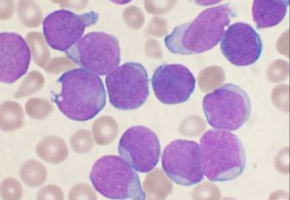
An international research team led by St. Jude Children's Research Hospital investigators has uncovered details of a new, high-risk subtype of acute lymphoblastic leukaemia (ALL) as well as a possible targeted therapy.
The findings appear today in the scientific journal Nature Communications.
The subtype is characterized by chromosomal rearrangements that involve the MEF2D gene and one of six partner genes, most often the gene BCL9.
It is called MEF2D-rearranged ALL.
"MEF2D is a transcription factor that switches on expression of other genes during normal development," said corresponding author Charles Mullighan, M.D., MBBS, a member of the St. Jude Department of Pathology. "We found that MEF2D chromosomal rearrangements disrupt expression of those genes and create a vulnerability to at least one targeted therapy, the drug panobinostat."
Genomic analysis of more than 1,700 children, adolescents and adults with ALL identified 42 with MEF2D rearrangements.
Researchers calculated that MEF2D-rearranged ALL accounts for 5.3 percent of the almost 30 percent of ALL cases whose genetic basis was unknown.
The MEF2D-rearranged subtype occurred most frequently in adolescents and was associated with reduced survival compared to some other ALL subtypes.
Panobinostat inhibits the activity of a family of proteins including HDAC9. Researchers showed that MEF2D-rearranged leukaemic cells produced high levels of HDAC9.
Investigators tested panobinostat in the laboratory and found the drug stopped proliferation of human MEF2D-rearranged leukaemic cells.
Panobinostat and similar drugs are known to have broad antitumour activity and are currently being tested in therapies for different types of leukaemia and lymphoma.
Mullighan said MEF2D-rearranged leukaemic cells were exquisitely sensitive to panobinostat, which suggested the drug might function in a more targeted manner against cells with the rearrangement.
"If further testing of panobinostat, either alone or in combination therapy, confirms the anti-proliferative activity that would lay the foundation for a clinical trial in patients, particularly patients with high-risk disease or those who have relapsed," he said.
For this study, researchers sequenced the RNA of 560 ALL patients to discover genetic changes, particularly chromosomal rearrangements that drive tumour growth.
The findings were verified by RNA sequencing of 1,164 cases.
Two cases also underwent whole genome sequencing (WGS).
WGS examines the sequence of DNA that encodes the complete set of instructions needed for life.
RNA sequencing provides a snapshot of which genes in the genome are being expressed and the level of their expression.
This method of next-generation sequencing is particularly suited for identifying novel gene rearrangements, including fusion genes created when pieces of genes break and fuse when chromosomes break and reassemble.
The leukaemia samples used in this study came from patients in the U.S., Canada and Europe, including the federally funded Children's Oncology Group (COG) and eight other institutions and research cooperatives.
The research involved collaboration with the National Cancer Institute's Therapeutically Applicable Research to Generate Effective Treatments (TARGET) Initiative.
TARGET uses genomic analysis of COG samples to identify therapeutic targets and spur development of more effective treatment for childhood cancer.
"Over the past decade we have learned a great deal about the genetic changes that lead to development of ALL," said co-author Stephen Hunger, M.D., of the Children's Hospital of Philadelphia and the Perelman School of Medicine at the University of Pennsylvania, and director of the TARGET/COG ALL project. "However, as this study shows, we continue to identify new subsets of ALL defined by specific genetic changes in the leukaemia cells that often provide important information about treatment outcome and identify new strategies for precision medicine treatments."
In addition to patients with the MEF2D-rearranged subtype, researchers also identified 20 patients with chromosomal rearrangements that involved the ZNF384 gene and one of six different partner genes.
Both the cases with MEF2D and ZNF384 rearrangements had distinct patterns of gene expression, suggesting the fusions are key drivers of each type of ALL.
Researchers also showed a fusion protein resulting from the MEF2D-rearragement led to sustained growth of mouse cells in the laboratory compared to the normal MEF2D or other proteins.
"That indicates the MEF2D fusion is a key step in transforming a normal white blood cell with a finite lifespan into a leukaemic cell that is immortal," Mullighan said.
Laboratory and clinical findings identified other distinctions.
For example, ALL occurs most often in children who are between 3 and 5 years old.
The average patient with MEF2D-rearranged ALL in this study was 14.
The five-year cancer-free survival for MEF2D-rearranged ALL patients was 71.6 percent.
That is better than some high-risk ALL subtypes, but it lagged behind the 87.3 percent for patients with certain other high-risk ALL subtypes.
Source: Nature Communications
The World Cancer Declaration recognises that to make major reductions in premature deaths, innovative education and training opportunities for healthcare workers in all disciplines of cancer control need to improve significantly.
ecancer plays a critical part in improving access to education for medical professionals.
Every day we help doctors, nurses, patients and their advocates to further their knowledge and improve the quality of care. Please make a donation to support our ongoing work.
Thank you for your support.